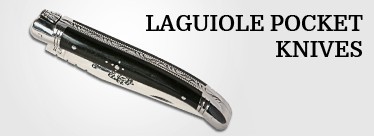Liner Lock Thiers |
Model n° TBELIN10121
Liner Lock Thiers walnut handle
Closed lenght : 10.5 cm Open lenght : 17.5 cm ( 4 1/8 inches) Handle: walnut wood. The "finger grooves" are hand made and allow a comfortable fit in your hand Liner : each liner is one of a kind (file worked ) as in a traditional high end knife; The "bouchonnage" polishing is done by hand. Bouchonnage is an old polishing technique of concentric circles in an offset pattern. It is also used in the high end watch industry Blade: swedish 12C27 stainless steel, mat polished. Hardness after cryogenic heat treatment : HRC 57 Mechanism : Liner-lock & blade 2.50 mm thick. Satisfying sound when opened & closed. Hardened detent ball to keep the blade shut. Blade is rotating on Teflon Packaging : The knife is delivered in black cardboard box with a numbered guarantee certificate. Handcrafted in Thiers-France
The bouchonnage polishing is done by hand. Each liner is one of a kind (file worked ) as in a traditional high end knife. It features easy one hand opening and closing. Handcrafted in Thiers-France it is guaranteed by the Coute de Tie, the Guild which certifies authenticity of design.
Did you know?
The Thiers knife is a trademark of the brotherhood of Thiers cutlers: "La Confrérie du Couté de Tié".
Its making complies to strict requirements by a guild-mastership, similar to those first set out in 1582 ("La Confrérie du Couté de Tié", jurande 1582). The confraternity has regulated Thiers cutlery as a whole for nearly 5centuries. Visiting Master Cutlers are authorised to monitor this, ensuring the 1994 rules are being followed at every step of the crafting of the knife.
Its liner-lock opening and closing system is a mechanism frequently used when making pocket knives.
The system is simple: one of the plates is cut so as to act as a spring. When the blade is completely open, a spring plate exerts lateral pressure and leans into alignment with the heel of the blade, thus blocking it open by lengthways pressure. The sprung part of the liner plate slips into a space freed by opening the knife. Your blade is locked open.
To unlock it, use your thumb to push sideways on the spring, freeing the blade. You can therefore open and close your knife one-handed!




















